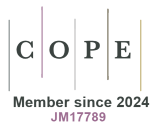Downloads
How to Cite
Landi, S., Landa, P., & Russo, S. (2016). Economic evaluation of platelet-rich-plasma versus hyaluronic acid for the treatment of knee osteoarthritis. Scenarios to 1 and 5 years: Valutazione Economica Sull’utilizzo Del Plasma Arricchito di Piastrine Vs Acido Ialuronico Per il Trattamento Dell’osteoartrosi al Ginocchio. Scenario a 1 Anno e a 5 Anni. Global and Regional Health Technology Assessment, 4(1), 11–21. https://doi.org/10.33393/grhta.2017.370
Issue
Section
Original Research Articles
License
Statistics
- Abstract views - 1047 times
- PDF downloads - 610 times
Sign up
Browse
banners150
Most popular articles in the last 30 days
-
320
-
127
-
112
-
111
-
108









